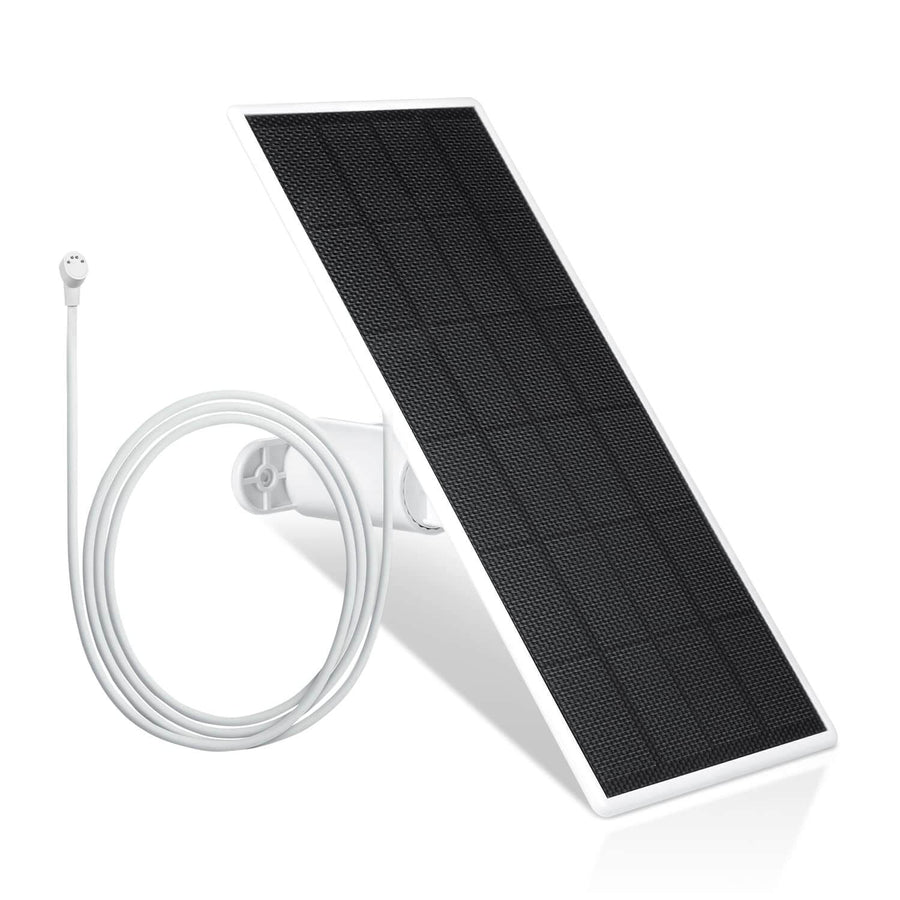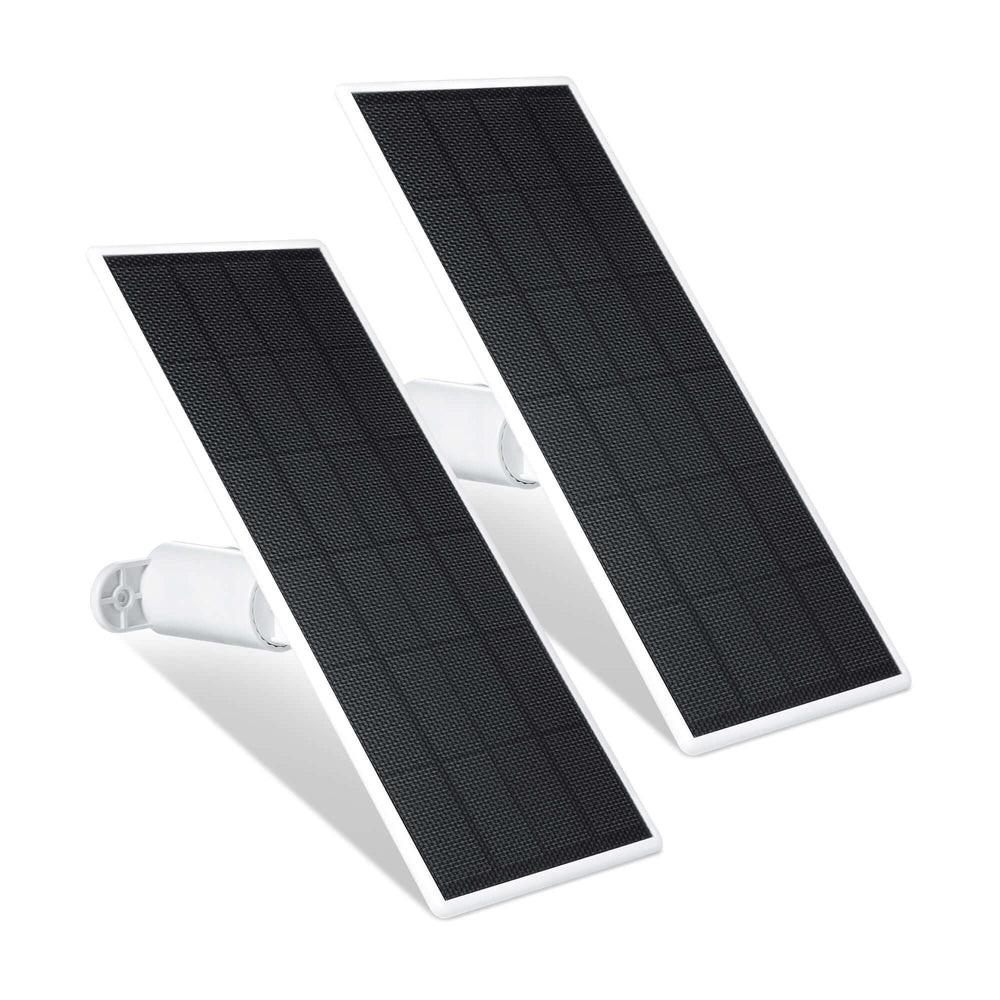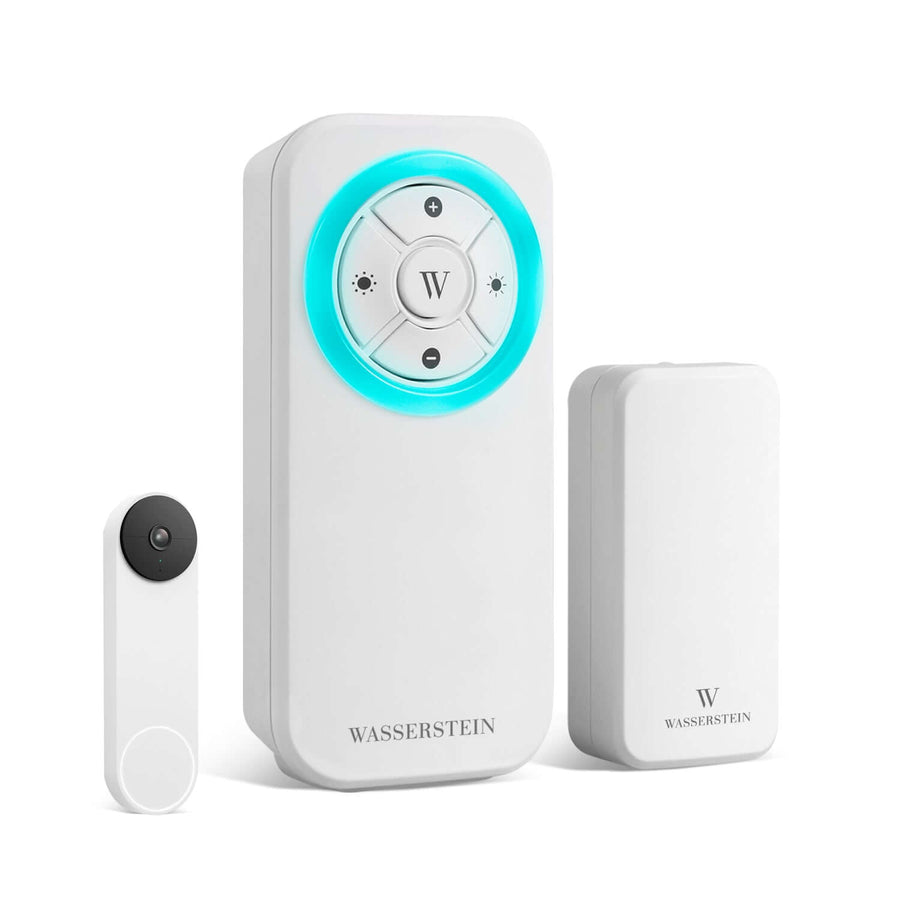IP vs. Analog Cameras: Which Security System is Right for You?
Security technology has evolved rapidly in recent years, giving consumers and businesses a wider selection of surveillance options than ever before. Among the most important decisions when building or upgrading a security system is whether to go with IP cameras or analog CCTV cameras. Both have their benefits and drawbacks, and the right choice depends on various factors including budget, image quality needs, scalability, and network infrastructure.
Whether you're protecting your home or managing a large-scale business facility, choosing the right camera system ensures that you’re making an informed investment.
Explore our smart camera systems here: Wasserstein Smart Camera Collection
What are IP Cameras?

IP cameras, short for Internet Protocol cameras, are a type of digital camera used for surveillance. Unlike traditional analog CCTV cameras that transmit video as an analog signal over coaxial cable, IP cameras capture and process digital video and transmit it over a computer network or the internet. This allows for remote viewing, cloud storage, and advanced analytics, making IP camera systems a powerful choice for modern security setups.
How IP Cameras Work
At the core of an IP camera is a digital sensor that captures light and converts it into digital data. This data is then processed inside the camera using an internal encoder, and the footage is streamed over an IP network—either a local area network (LAN) or the internet.
Unlike analog cameras, IP systems don't require a direct connection to a DVR. Instead, they can send video to a network video recorder (NVR) or cloud storage, allowing users to access live feeds or recorded footage from anywhere using a mobile device, computer, or smart home hub.
There are two main types of IP cameras:
-
Wired IP Cameras: These connect to a network using Ethernet cables. Many models support Power over Ethernet (PoE), which allows a single cable to deliver both data and power, simplifying installation.

- Wireless IP Cameras: These connect to a Wi-Fi network and are ideal for places where running cable is difficult. They are often used for DIY home security and indoor surveillance.
Check our Wireless Security Cameras
Pros of IP Cameras
IP cameras are known for their superior image quality and smart features that go far beyond what analog systems can offer. Here are some standout advantages:
- High Resolution: Many IP security cameras support HD, 2K, 4K, or even higher resolutions, resulting in clearer, more detailed images. This improves object recognition, license plate capture, and facial recognition capabilities.
- Digital Zoom: Because the video is captured in high resolution, you can zoom in on specific areas of footage without significantly degrading picture quality—a major benefit over analog systems.
- Motion Detection and Alerts: Advanced IP systems can detect motion and trigger alerts, notifications, or even automatic recording based on pre-defined zones or activities.
- Remote Viewing: Users can view live or recorded video on smartphones, tablets, or computers from virtually anywhere, enabling 24/7 monitoring on the go.
- Advanced Analytics: Many IP cameras support AI features such as person detection, vehicle tracking, heat mapping, and behavior analysis. These features allow for intelligent monitoring of specific events and reduce false alarms.
- Scalability: Adding additional cameras is straightforward with IP systems. They integrate easily into an existing network, making them highly scalable for growing businesses or expanding homes.
- Flexible Storage Options: IP cameras can record to local NVRs, cloud servers, or even SD cards within the camera itself. This allows for customized storage strategies based on your needs and compliance requirements.
Cons of IP Cameras
While IP camera systems offer many benefits, there are a few limitations to consider:
- Higher Cost: Compared to analog systems, IP cameras generally have a higher upfront cost. However, their extended capabilities often justify the investment.
- Bandwidth Demands: Streaming high-resolution video can consume significant bandwidth, especially when multiple cameras are active. A robust internal network is often required to prevent lag or dropped frames.
- Network Configuration: Setting up IP cameras may involve assigning IP addresses, configuring ports, and securing the connection. This can be challenging for users without IT experience.
What are Analog Cameras?

Analog cameras, often referred to as analog CCTV cameras, are the traditional foundation of closed circuit television surveillance systems. These cameras operate by capturing video as an analog signal and transmitting it via coaxial cable to a centralized device such as a digital video recorder (DVR). While this technology has been around for decades and is considered less advanced than its IP-based digital counterparts, analog systems are still widely used due to their simplicity, reliability, and cost-effectiveness.
How Analog CCTV Cameras Work
At their core, analog cameras use a charge-coupled device (CCD) or CMOS sensor to capture light and produce an electrical signal. This signal is then converted into a video signal and sent through a coaxial cable to a DVR. The DVR digitizes the footage, compresses it into a manageable digital video format, and stores it on a hard drive for playback or archiving.
Analog cameras can transmit data approximately 300 meters over coax cable, making them suitable for scenarios where the monitoring team is far from the installed cameras.
Traditional analog cameras do not process video within the camera itself; all processing and storage happen at the DVR level. Some modern analog systems now support HD-over-coax formats like HD-TVI, HDCVI, or AHD, which allow for higher resolution video (up to 1080p or 5MP) to be transmitted over standard coaxial cable.
Key Components of an Analog Camera System

- Analog Camera: Captures the image and outputs a continuous video signal.
- Coaxial Cable (or RG59 Siamese cable): Carries video to the DVR; Siamese versions include a second line for power.
- Power Supply: Analog cameras require a separate power source, which may be centralized or local to the camera.
- DVR (Digital Video Recorder): Converts analog signals to digital video, stores footage, and provides playback.
- Monitor: Displays live or recorded video feeds, usually connected to the DVR via HDMI or VGA.
Pros of Analog Security Cameras
Despite being older technology, analog security systems offer several practical advantages:
- Lower Initial Cost: Analog systems are more budget-friendly than IP systems. Camera units and DVRs are typically less expensive, making them an attractive choice for those looking for a cost-effective solution.
- Simple Installation: These systems are often plug-and-play and require minimal configuration. Installers only need to run coaxial cable from each camera back to the DVR. However, it's important to note that while an analog CCTV camera can transmit feed in real time, its image resolution falls short against modern digital alternatives.
- Wide Compatibility: Many analog cameras and DVRs are interoperable across brands and models, reducing the need to match specific devices.
- Minimal Network Load: Since analog systems don’t rely on an IP network, they don’t consume internet or local bandwidth, which is ideal for low-tech environments or areas with limited connectivity.
- Stable Video Transmission: Analog signals provide real-time video with minimal latency, which can be useful in applications like live monitoring or security guard stations.
Cons of Analog Systems
While analog CCTV systems have their place, they also come with notable limitations:
- Lower Image Quality: Standard analog cameras offer a resolution typically limited to 480p or 960H. Even with HD analog options, the image quality often lags behind that of IP cameras, especially when digital zoom is required.
- Limited Smart Features: Analog systems lack support for motion detection, advanced analytics, and other AI-based enhancements that are standard in many digital camera systems.
- Separate Power and Video Cables: Each camera needs a distinct connection for video and power unless using Siamese cables, which can complicate installation.
- No Native Internet Access: Analog systems don’t support remote viewing unless the DVR is internet-enabled, which often involves additional setup.
- Scalability Challenges: Expanding an analog system requires additional physical cabling and DVR inputs. Adding more cameras can quickly become cumbersome in large-scale installations.
Key Differences Between IP and Analog Security Cameras
When choosing the right security system for your property, understanding the main difference between IP cameras and analog cameras is crucial. While both types serve the same core function—capturing images for surveillance—the way they transmit, process, store, and access video varies significantly.
This section breaks down the key differences in performance, features, installation, and long-term value, helping you make an informed decision.
Let’s compare analog vs. IP camera systems across some essential factors:
Video Quality and Resolution
- IP Security Cameras: Offer superior image quality, often supporting HD, 2K, or 4K resolutions. They produce crisp, detailed footage, making them ideal for facial recognition, license plate reading, and identifying specific events.
- Analog CCTV Cameras: Typically limited to lower resolutions (e.g., 480p to 1080p). Even high-definition analog formats (like HD-TVI) can’t match the digital clarity of IP cameras. When digital zoom is applied to analog video, image degradation is common.
Winner: IP cameras for consistently delivering better image quality and higher resolution.
Storage and Data Transmission
- Analog Systems: Record footage via a DVR. Video is transmitted over a coaxial cable, converted from an analog signal to a digital video format, and then stored locally.
- IP Camera Systems: Transmit video in a digital format from the start, using IP networks to send data to an NVR, server, or cloud storage. IP cameras often use twisted pair cables for data transmission, which enhances their connectivity and performance. They also support remote viewing, encryption, and easier data management.
Winner: IP systems for flexibility in cloud storage and faster access to high-quality video files.
Connectivity and Remote Access
- IP Cameras: Connect through your existing network or the internet, enabling full remote viewing, mobile notifications, and real-time alerts via smartphone apps or web browsers.
- Analog Cameras: Require physical DVR access for playback unless the DVR is network-enabled, and even then, remote access features are often basic.
Winner: IP cameras, thanks to built-in support for remote access and smart home integration.
Installation and Scalability
- Analog Systems: Each camera needs a separate coaxial cable and power source, which can result in cable clutter. Adding more cameras often means running new cables and potentially upgrading the DVR.
- IP Cameras: Require fewer cables when using Power over Ethernet (PoE)—a single cable delivers both power and data. They're easier to expand, especially in buildings with existing Ethernet infrastructure.
Winner: IP systems, offering simpler installations and better scalability.
Cost Comparison
- Analog Systems: Lower upfront costs for equipment and simpler setups make analog cameras a cost-effective solution for basic surveillance needs.
- IP Systems: Higher initial investment, but long-term savings due to fewer cables, greater coverage per camera, and reduced hardware requirements.
Winner: Analog cameras for tight budgets, but IP cameras offer better value over time.
Which One Should You Choose? Factors to Consider
Choosing between IP vs. analog cameras isn’t just about technology—it’s about finding the best fit for your unique security needs, infrastructure, and budget. Whether you’re setting up surveillance at home, managing a retail store, or protecting a warehouse, there are several key factors to evaluate before committing to a camera system.
Here’s a closer look at how different environments, needs, and priorities affect the ideal security setup.
For Homeowners
If you’re installing a security system to protect your home and loved ones, you’ll likely want something that’s user-friendly, integrates with your devices, and allows you to monitor your property remotely.
Why IP Cameras Are Best for Most Homes:

- Easy Remote Viewing: With built-in support for smartphones, tablets, and PCs, IP cameras allow homeowners to check in from anywhere.
- Motion Detection Alerts: IP systems can send instant notifications when activity is detected in certain zones—ideal for monitoring doors, driveways, and porches.
- Smart Home Integration: Many IP cameras work with Alexa, Google Assistant, or smart home hubs.
- DIY-Friendly Installation: Wireless IP cameras offer quick setup with minimal cabling, making them ideal for apartments or homes with limited wiring access.
- Scalable for Growth: Planning to add more cameras later? IP systems can easily expand without major rewiring.
If video quality, flexibility, and remote access are important to you, IP camera systems are the smarter choice.
When Analog Might Work:
- You’re seeking a basic surveillance setup for a garage or backyard.
- You’re not interested in remote viewing or advanced analytics.
- You want a more cost-effective solution and don’t mind local-only video playback via DVR.
Analog systems still work well for minimal monitoring and are especially appealing for users on a tighter budget.
For Small Businesses
Small business owners often want reliable security without breaking the bank. Whether you're running a boutique, café, or professional office, your needs will likely revolve around monitoring entrances, cash registers, and inventory areas.
Analog Cameras Are Still Viable If:
- You only need to monitor 1–3 areas.
- Your priority is live viewing and basic recording, not high-resolution video or advanced analytics.
- You’re replacing an existing analog setup and want to avoid replacing all your coaxial wiring.
Analog systems remain a low-cost solution for small businesses with basic security needs.
IP Cameras Offer a Stronger Long-Term Investment:
- High-resolution video helps identify shoplifters or monitor employee behavior.
- Digital zoom and wide-angle lenses reduce the number of cameras required per area.
- Cloud storage and remote access enable business owners to stay informed from anywhere.
- Integration with motion detection or facial recognition features enhances proactive security measures.
For Medium to Large Businesses & Facilities

Larger facilities, including warehouses, schools, and corporate offices, need comprehensive coverage and advanced analytics to protect assets, staff, and visitors.
Why IP Systems Are Ideal:
- Scalability: Easily add more cameras across multiple buildings or locations using your existing internal network.
- Advanced Features: Use AI-powered tools to detect specific events like motion, loitering, or tampering.
- Remote Central Monitoring: Combine feeds from various facilities for centralized viewing and management.
- Integration with Security Infrastructure: IP cameras can work with access control systems, alarms, and building automation tools.
While the initial cost may be higher, the long-term efficiency and capability of IP systems make them the preferred option for businesses with complex or growing surveillance needs.
Other Important Considerations
Before deciding on IP cameras vs. analog systems, weigh the following:
- Existing Infrastructure: Do you already have coaxial cabling installed? If so, upgrading to newer analog cameras or using a hybrid system might be more practical.
- Internet Reliability: If your internet is slow or unreliable, you may want to stick with analog systems, which don’t depend on constant internet access.
- Budget vs. Features: Analog offers a lower entry cost, while IP delivers superior image quality, analytics, and long-term scalability.
- Data Security: IP systems often use encryption for video feeds, making them more secure than unencrypted analog signals.
- Compliance Requirements: Some industries (e.g., banking, healthcare) may require higher resolution and digital video formats for regulatory compliance.
Securing images and data is crucial to minimize the risk of security breaches, particularly in the context of camera transmission.
Read more: Types of Security Cameras and Their Uses
FAQ
Can I convert my analog cameras to IP cameras?
Yes, using video encoders or a hybrid DVR, you can integrate existing analog CCTV into an IP system. However, this won’t improve video quality.
Do IP cameras need internet access to work?
Not necessarily. IP cameras can function on a local network without internet. But remote viewing and cloud storage require an active internet connection.
Is there a big price difference between IP and analog cameras?
Yes. IP cameras cost more upfront, but often eliminate the need for coaxial cable and support wider coverage, reducing long-term costs.
Which security camera type has better night vision?
Generally, IP cameras, especially higher-end models, offer better infrared capabilities and low-light performance.
Can I mix analog and IP cameras in one system?
Yes, with a hybrid DVR/NVR, you can use both types of cameras, making it a flexible upgrade path.








Leave a comment